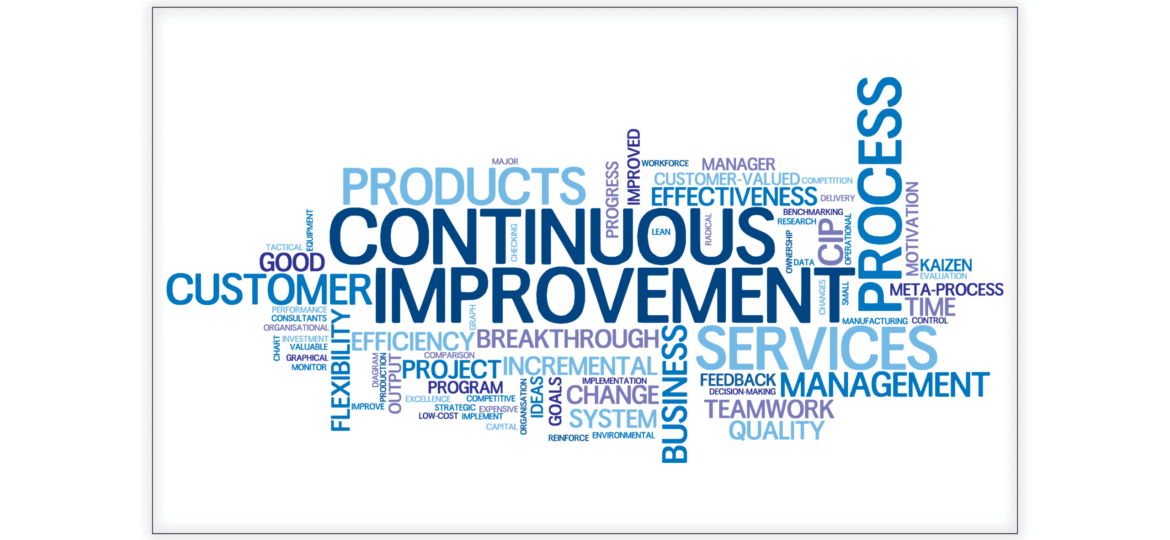Continuous Improvement cycle
Deciding exactly when to stop planning and when to start executing can seem impossible.
Plan too long and you’re stuck in analysis paralysis.
Execute too early and you’re probably headed for lackluster results.
Finding the balance between planning and execution is your starting point for implementing a cycle of continuous improvement.
There are several frameworks that you can use and by now, you probably know that from my perspective, the framework you chose to use is much less important than understanding the Why, What, and How.
Why Continuous Improvement?
The reason why we as leaders, should use a continuous improvement cycle is that we are often making decisions based on limited information. That means that we have gathered enough information to make an informed decision but many unknowns remain to be answered. If we Plan and then Execute based on what we’ve learned, it allows us to move faster knowing we will come back to Review, Revise, and Repeat the process thus creating a cycle of continuous improvement.
The what behind continuous improvement is geared towards both the people that changes will impact and the goal we’re trying to achieve. From your team’s perspective, they’re going to be most curious about what’s in it for them and what the impact will be on their work. You’ll need to address these concerns while also talking about the goals.
Sharing the why and what, early and often, is the best way to not only get your team onboard with change but ultimately drive change forward through your continuous improvement cycle.
PERRR Framework
This is our Foundations Framework that I created and continue to use today. I wanted something simple and easy for everyone throughout the organization to understand and also have the ability to apply the framework outside of the typical “Lean” initiatives. Here’s how to use it:
Plan – You need a documented plan to keep you headed toward your defined S.M.A.R.T. goals. You want to identify the resources you’ll need to involve, define potential obstacles, and brainstorm how to remove those obstacles.
Execute – Once you’ve made your plan, it’s time to execute it. You want to make sure you’re tracking activities and resources to understand if you’re moving closer to or further away from your goals.
Review – This is the time to ask: What’s working and what’s not working? Depending on your goals or the size of the initiative, reviews can be done once per quarter or more or less frequently.
Revise – You want to be thinking: How do we do more of what’s working well and either eliminate or change what’s not working well? This will be done at the same time or shortly after your review.
Repeat – Continue until you’re reached or exceeded your goals. Getting into this cycle once per quarter, especially for larger goals and initiatives will not only help you stay consistent but it will improve your communication leading to an impact on your financials and culture.
PCDA Framework
Plan, Do, Check, Act (PDCA) is a framework that W. Edwards Deming created and is most often associated with Lean Manufacturing and specific to process improvement. It is also referred to as the Deming Cycle or Demin Wheel. Here’s how to use it:
Plan – Identify and define the specific process improvement opportunities
Do – Implement the process improvement changes
Check – Evaluate the results or impact of the implemented changes
Act – Standardize the change through training or start the cycle again
DMAIC Framework
Define, Measure, Analyze, Improve, and Control (DMAIC) is a framework most often associated with Six Sigma as well as Lean and specific to both quality and process improvement. Here’s how to use it:
Define the problem or opportunity
Measure the performance
Analyze the processes and determine the root cause for non-conformance
Improve processes by addressing and eliminating the root causes
Control the improved processes
Depending on your leadership role, you may find yourself with more specific or broader opportunities to apply a continuous improvement cycle. Pick a framework that makes sense for you, your team, and the opportunity you’re working on. Implementing any of these frameworks will lead to faster unlocks that drive growth and help your organization operate with excellence.
That’s it for today.
See you all next week!
Dave
Whenever you're ready, there are 3 ways we can help you:
- Current State Sprint: Get a bird's-eye view of your current operations and an action plan that shows you how to succeed.
- Future State Sprint: Get your future state implementation plan that drives operational excellence and sustainable growth.
- Let’s Collaborate: Optimize your operations with an engagement tailored to achieve your specific business objectives.


